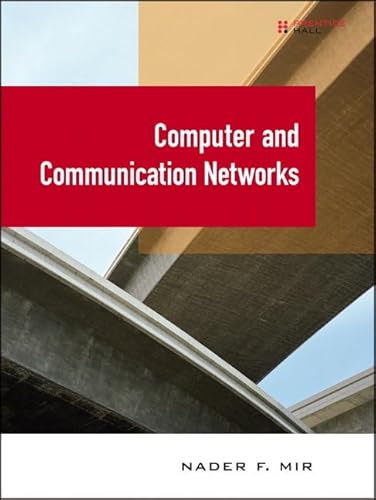
Synopsis
As the number and variety of communication services grow, so do the challenges of designing cost-effective networks that meet the requirements of emerging technologies in wireless, sensor, and mesh networks. Computer and Communication Networks is the first book to offer balanced coverage of all these topics using extensive case studies and examples.
This essential reference begins by providing a solid foundation in TCP/IP schemes, wireless networking, Internet applications, and network security. The author then delves into the field's analytical aspects and advanced networking protocols.
Network architecture books are often citicized for not offering enough practical, scenario-based information. Computer and Communication Networks provides an effective blend of theory and implementation not found in other books.
Overall, readers will find a thorough design and performance evaluation that provides a foundation for developing the ability to analyze and simulate complex communication networks.
"synopsis" may belong to another edition of this title.
About the Authors
Nader F. Mir is a professor in the Electrical Engineering Department of San Jose State University. He has received a number of prestigious national and university awards and has published numerous technical journal and conference papers in the field of communications and networking. He is a senior member of the IEEE and has served as a member of the Technical Program Committee and Steering Committee for a number of major conferences. He is also currently an editor for three major journals in communications and networking.
Nader F. Mir is a professor in the Electrical Engineering Department of San Jose State University. He has received a number of prestigious national and university awards and has published numerous technical journal and conference papers in the field of communications and networking. He is a senior member of the IEEE and has served as a member of the Technical Program Committee and Steering Committee for a number of major conferences. He is also currently an editor for three major journals in communications and networking.
From the Back Cover
As the number and variety of communication services grow, so do the challenges of designing cost-effective networks that meet the requirements of emerging technologies in wireless, sensor, and mesh networks.Computer and Communication Networks is the first book to offer balanced coverage of all these topics using extensive case studies and examples.
This essential reference begins by providing a solid foundation in TCP/IP schemes, wireless networking, Internet applications, and network security. The author then delves into the field s analytical aspects and advanced networking protocols.
Students and researchers will find up-to-date, comprehensive coverage of fundamental and advanced networking topics, including:
- Packet-switched networks and Internet Network protocols
- Links
- LAN Protocols
- Wireless Networks
- Transport Protocols
- Applications and Management
- Network Security
- Delay Analysis
- QoS
- High speed protocols
- Voice over IP
- Optical Networks
- Multicasting Protocols
- Compression of Voice and Video
- Sensor/Mesh Networks
Network architecture books are often criticized for not offering enough practical, scenario-based information.Computer and Communication Networks provides an effective blend of theory and implementation not found in other books.
Key features include:
- Figures and images that simplify complex topics
- Equations and algorithms
- Case studies that further explain concepts and theory
- Exercises and examples honed through the author s twelve years of teaching about networking
Overall, readers will find a thorough design and performance evaluation that provides a foundation for developing the ability to analyze and simulate complex communication networks.
"About this title" may belong to another edition of this title.
Other Popular Editions of the Same Title
Search results for Computer and Communication Networks
Computer and Communication Networks
Seller: HPB-Red, Dallas, TX, U.S.A.
Paperback. Condition: Good. Connecting readers with great books since 1972! Used textbooks may not include companion materials such as access codes, etc. May have some wear or writing/highlighting. We ship orders daily and Customer Service is our top priority! Seller Inventory # S_409262167

